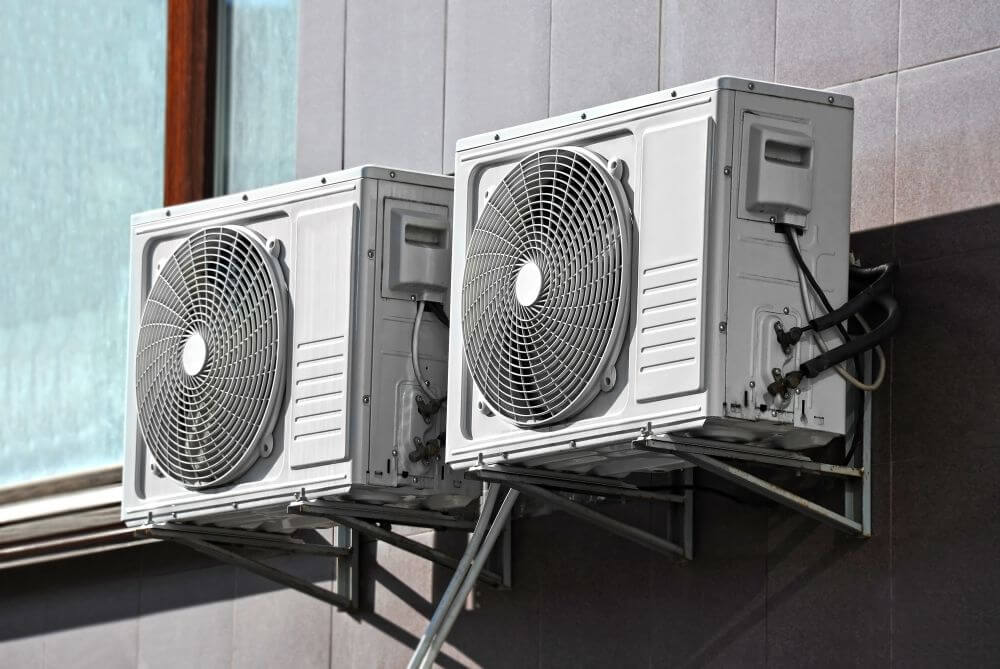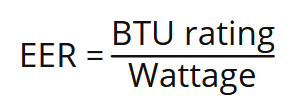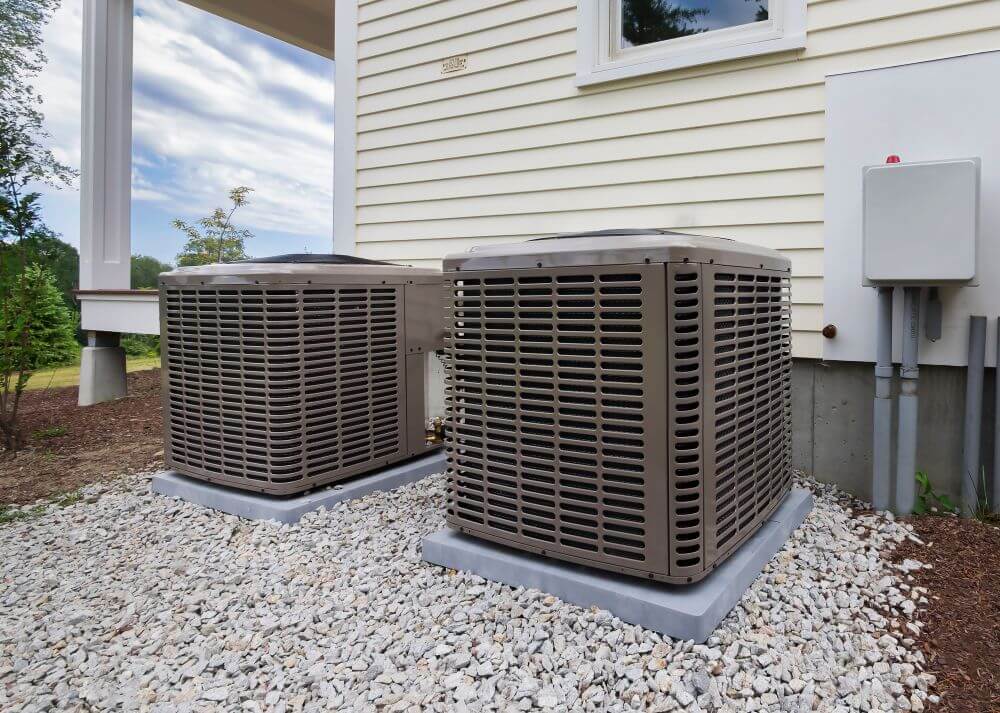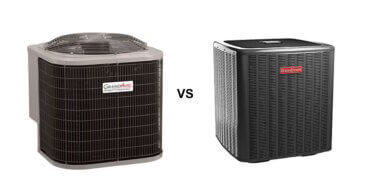Scientists have predicted that we will be running out of our major energy sources in the next 30-40 years. Given that we need to conserve energy, governments have put in much effort towards improving the efficiency of the devices that we daily use.
An HVAC system is a heating, ventilation, and air conditioning system. As you might already know, these are temperature control and air quality maintenance systems used in a room, a building, or even large industrial units. In this article, we will explain how to calculate EER HVAC for your system.
To ensure that HVAC’s are energy efficient, the government has created an efficiency metric known as the Energy Efficiency Rating (EER). In this article, I will explain what EER is and how we can use it to measure the efficiency of our HVAC units.

What is EER in HVAC?
The Energy Efficiency Rating (EER) is the BTU rating of an HVAC divided by its wattage. A higher rating is better than a lower rating. Let me first explain some basic terms, and then we will discuss how to calculate the EER for your HVAC system.
Related article:
Air Conditioners Buyer Guide
BTU
The term BTU stands for “British Thermal Unit.” It is a measure of the strength of an HVAC unit, or in simple terms, how well it can cool or heat your room.
Officially a BTU is the energy needed to increase the temperature of a pound of water by 1°F. But when it comes to air conditioners, you can think of it slightly differently – it is the amount of heat removed from the room and replaced by cold air – in one hour.
The higher the BTU, the bigger the room that an AC can cool. Therefore, if your room is small, you can make do with a low BTU air conditioner. But if you have a large, 450 square feet room, you would ideally need an AC with at least 12,000 BTU.
Apart from the size of the room, other factors also influence how many BTUs you need in your air conditioner. For example, the height of the ceiling, heat-generating appliances that might increase the temperature of a room, or how much sunlight hits the room directly can all change the BTU requirement by up to 10%.
Wattage
A wattage is a standard unit of power that applies to electrical appliances or any appliance that uses power. In all cases, the lower the wattage, the lower the energy used—the higher the Wattage, the higher the energy consumed. Low wattage is good for energy conservation but may not be so good for how well the device can function.
Formula For Calculating EER
Finally, let’s calculate the EER by dividing the BTU rating of an HVAC by its wattage.

For example, a 12,000 BTU air conditioner that uses up only 1,100 Watts of power, such as the Whynter Elite ARC-122DS, will have an EER = 12,000/1,000 = 10.9. This rating is considered fairly good for a portable air conditioner (the average EER of portable AC’s is about 8.5).
What Is a Good EER Rating?
Usually, an EER rating of 12 is considered excellent for home air conditioners. However, it is essential to note that EER is a comparative rating also. If you can’t find an air conditioner that suits you and has an EER of 12 or above, choose the one that has the highest EER instead. It will be more energy efficient.

Why Does a Good EER Matter?
Consider these facts: we spend close to $11 billion every year on cooling our homes. Our government says that we can save between 20-50% of that amount by switching to more energy-efficient air conditioners.
Do you know what we could do with that much money? We could wipe out hunger in Africa.
That’s why it is crucial to ensure that we use the most energy-efficient cooling devices. It may not impact your electric bill much, but the money saved would be a huge fund.
There are other reasons to worry about the EER rating as well:
- Better performance.
- Silent and more durable performance.
- Energy-efficient air conditioners are typically smarter and can give you better maintenance updates.
What Is SEER?
While, in theory, EER seems to be a great metric to understand energy efficiency, in practice, it is not. You might end up finding that it does not translate exactly to the kind of efficiency you expect.
For example, the EER rating takes into account specific conditions of outdoor temperature (95°F), indoor temperature (80°F), and relative humidity (50%). These conditions may not exist in most parts of the country at any time of the year.
That is why EER is normally used only for room air conditioners, not for window air conditioners or central air conditioners.
For central air conditioners, the metric used is called a SEER (Seasonal EER). Seasonal EER measures energy efficiency in various conditions across an entire season instead of in a static environment. The outdoor temperature conditions can vary anywhere between 65°F to 104°F, and we measure it in climatic conditions prevalent in central America.
How To Calculate EER HVAC and SEER?
As mentioned earlier, you can calculate EER by dividing the BTU rating of the unit by its wattage consumption.
The measurement and definitions of SEER are managed by the Air-Conditioning, Heating, and Refrigeration Institute (AHRI). It is calculated as EER when measured over varying weather conditions. You can measure SEER as follows:

The idea here was not to confuse you, but instead to give you an idea that the EER usually mentioned on air conditioners is the EER100% rating. Instead, the good folks over at AHRI have given us these two much simpler formulas:
When your EER is above 14, the SEER is:

When the EER is below 14, the SEER is:

Final Words
EER and SEER are great ways to understand your HVACs energy efficiency. However, you can control your energy usage in many other ways.
For example, during the summers, you can keep your thermostat at 78°F when you are home and higher when you are away. Similarly, by dialing back your thermostat for eight hours a day when it is not in use, you can save close to 10% on your energy bills.
Hopefully, we have given you practical ideas on how to calculate EER HVAC for your system. Let us know your experience in the comments below!





Leave a Comment